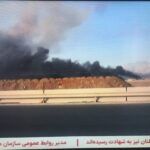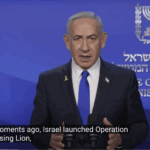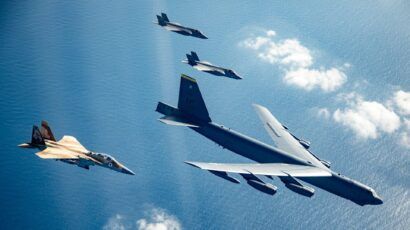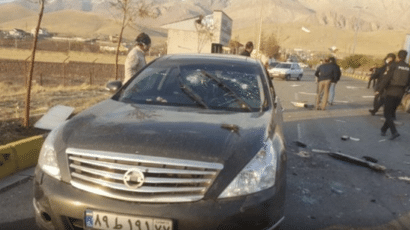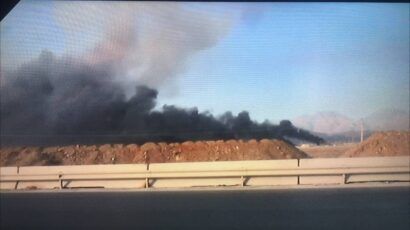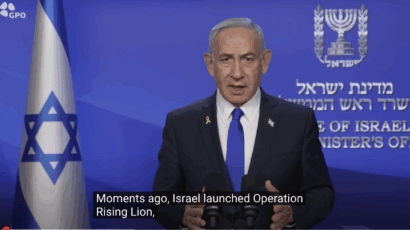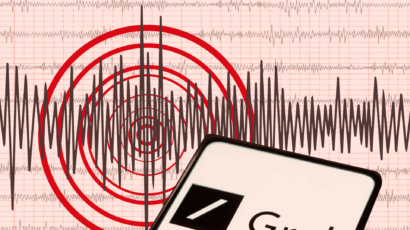Israel is now at war with Iran. Seeks regime change
By François Diaz-Maurin | June 14, 2025
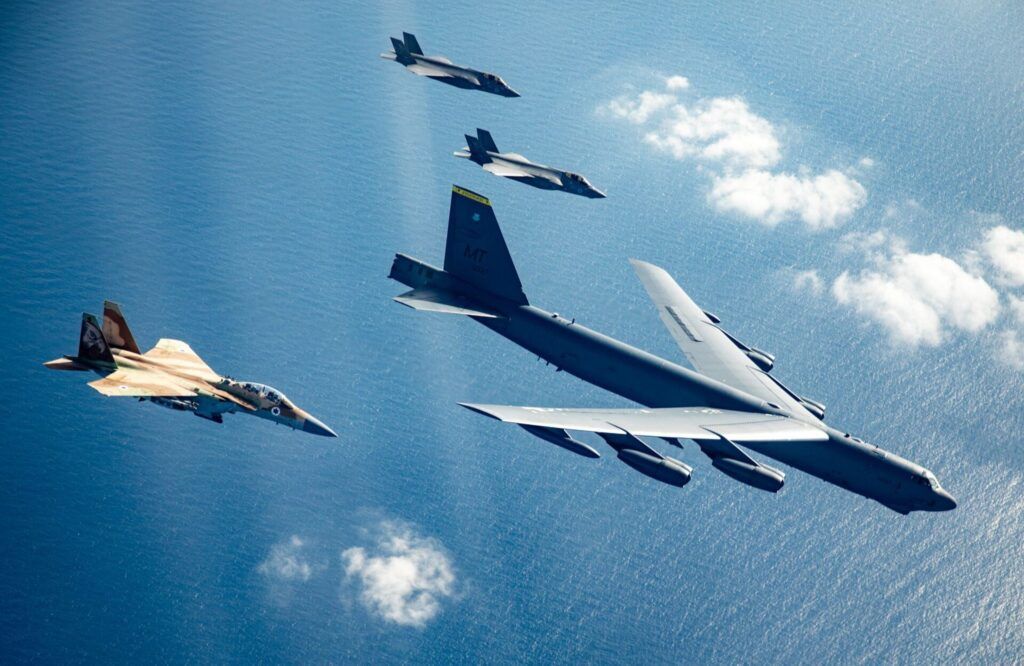 Israeli Air Force F-15I and F-35I fighter jets fly alongside a US B-52 bomber during a joint exercise on March 4, 2025. On Saturday, Israel reportedly requested that the United States join its ongoing operation against Iran to help targeting underground nuclear facilities, including the Fordow fuel enrichment plant using "bunker busters" like the GBU-57A/B MOP (Massive Ordnance Penetrator) that only US bombers can carry. (Photo: Israel Defense Forces)
Israeli Air Force F-15I and F-35I fighter jets fly alongside a US B-52 bomber during a joint exercise on March 4, 2025. On Saturday, Israel reportedly requested that the United States join its ongoing operation against Iran to help targeting underground nuclear facilities, including the Fordow fuel enrichment plant using "bunker busters" like the GBU-57A/B MOP (Massive Ordnance Penetrator) that only US bombers can carry. (Photo: Israel Defense Forces)
Editor’s note: This is a developing story that will be updated.
The conflict between Israel and Iran dramatically escalated on Saturday. Iran responded to Israel’s surprise attack of the day before by launching a barrage of ballistic missiles against Tel Aviv and other Israeli cities. And Israel reportedly expanded its strikes to natural gas refineries in Southern Iran.
Even though the vast and complex military operation was initially believed to be aimed at destroying Iran’s nuclear-weapon-making capabilities, independent analysis of satellite imagery suggested that this objective was only partially achieved after the first phase of the attack. Most of the damaged facilities were either above-ground buildings or underground entrances, underscoring Israel’s lack of capability to directly destroy underground halls of Iran’s enrichment plants.
But by Saturday night, Israel’s operation seemed to follow a broader objective: regime change.
In a video statement on Friday night, Israel Prime Minister Benjamin Netanyahu had already hinted to this, addressing Iranians directly: “Tonight, I wish to speak to you, the brave people of Iran,” adding, “The Islamic regime, which has oppressed you for nearly 50 years, threatens to destroy my country, the state of Israel.” Then Netanyahu explained that the objective of Israel’s military operation is “to remove this threat—both the nuclear threat and the ballistic missile threat to Israel.” According to Netanyahu, Israel’s decapitation strikes were “clearing the path to freedom” for Iranians.
Political analyst Tom Nichols of The Atlantic had also suggested after Friday’s first strikes that, because Israel had reportedly eliminated several senior Iranian leaders, including some from the Iranian General Staff, “Israel’s goal might be decapitation of the Iranian regime, perhaps with the aim of regime change.” By Saturday night, Israel reported to have targeted and killed other senior Iranian officials and commanders, seemingly confirming the theory of regime change.
On Saturday, Israel claimed that the Israeli Air Force had established aerial superiority over western Iran and the capital of Tehran. By Saturday night, Netanyahu seemed confident: “Our pilots over the skies of Tehran will deal blows to the Ayatollah regime.”
“We have indications that senior leaders in Iran are already packing their bags. They sense what’s coming.”
But Thomas Friedman warned in the New York Times that regime change could go both ways: Israel’s military operation could put “in motion a set of falling dominoes, ending with the toppling of the Iranian regime and its replacement by a more decent, secular and consensual one.” It could also be an operation that “sets the whole region on fire and sucks in the United States.”
Together, we make the world safer.
The Bulletin elevates expert voices above the noise. But as an independent nonprofit organization, our operations depend on the support of readers like you. Help us continue to deliver quality journalism that holds leaders accountable. Your support of our work at any level is important. In return, we promise our coverage will be understandable, influential, vigilant, solution-oriented, and fair-minded. Together we can make a difference.
Keywords: Iran, Iran nuclear program, Israel, Israel-Iran war, Natanz enrichment plant, Netanyahu, nuclear proliferation, nuclear weapons
Topics: Nuclear Risk, Nuclear Weapons



